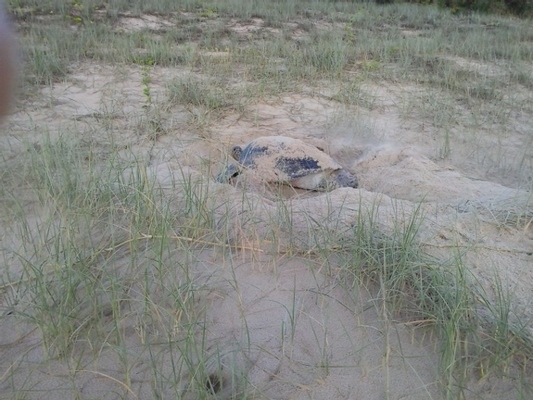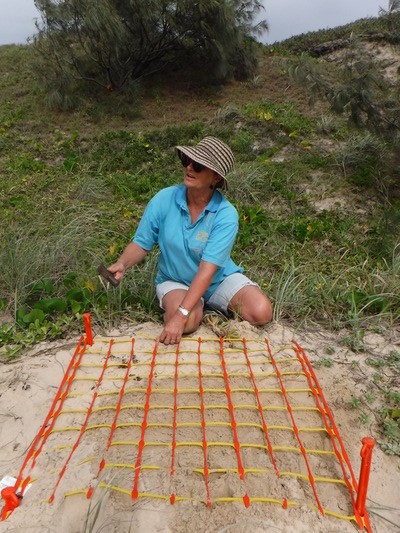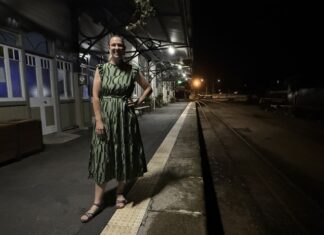Weather predictions of extreme high tides and huge swells sent Coolum and North Shore Coast Care volunteers into action last week to relocate eight out of the 11 green and loggerhead turtle nests along the ocean beaches to safer spots further up the sand dunes.
Group president Leigh Warneminde said moving the nests was a complicated process that the volunteers didn’t undertake lightly but they were pleased they made the effort when they saw the large seas would have washed them away or drowned the hatchlings.
“I think it’s been a really great call. We haven’t lost any. If we get another low or erosion event we can rest a bit easier,“ she said.
Though she said the group did hold concerns for a couple of nests on Noosa North Shore which they haven’t been able to access.
A group of about 14-15 volunteers who had been trained and accredited at Mon Repos Turtle Centre to relocate turtle nests had conducted the move of nests located at Alexandria Bay and Peregian, Castaways, Yaroomba, Marcoola and Mudjimba beaches.
A nest at the Maroochy River mouth had been moved earlier to Twin Waters to prevent the hatchlings heading for the lights down river which would have eventuated, Leigh said.
To move the eggs the volunteers dug down to the eggs, measured the depth of the nest which was about 60cm and transferred each egg into a bucket surrounding it with sand to ensure it didn’t move or dry out, Leigh said. They then dig a hole to the same depth and carefully place the eggs in the same direction. The nests are then covered with mesh to protect them from predatory foxes.
She said they had to ensure the eggs were not rotated during the move and was rested in the same position, as rotating it, particularly in the first 32 days after laying, would kill the hatchling. The nests contained between 132 and 148 eggs and the hatching rate was generally greater than 90 per cent, Leigh said.
“There are very few loggerheads left. Only one in a thousand makes it to maturity. They don’t lay until they’re 30,“ Leigh said.
“We won’t see the outcome of what we’ve done for 30 years.“
Leigh said the effort to protect the turtles included an army of beach walkers who inform them of turtle activity.
“There’s a whole lot of people keeping an eye on them,“ she said.
For more information visit coolumcoastcare.org.au









